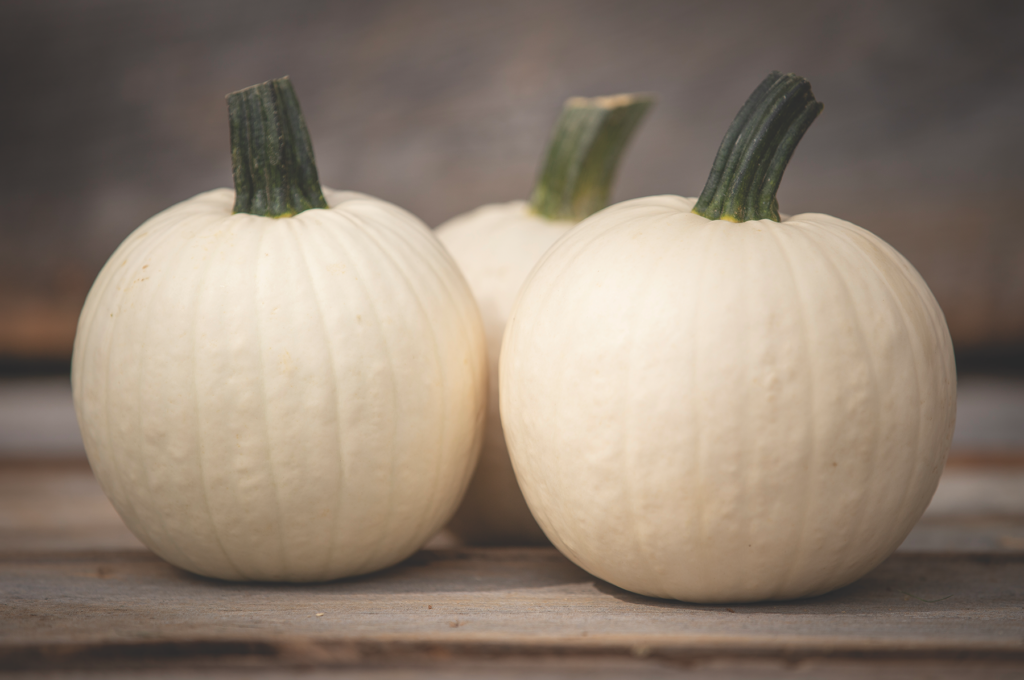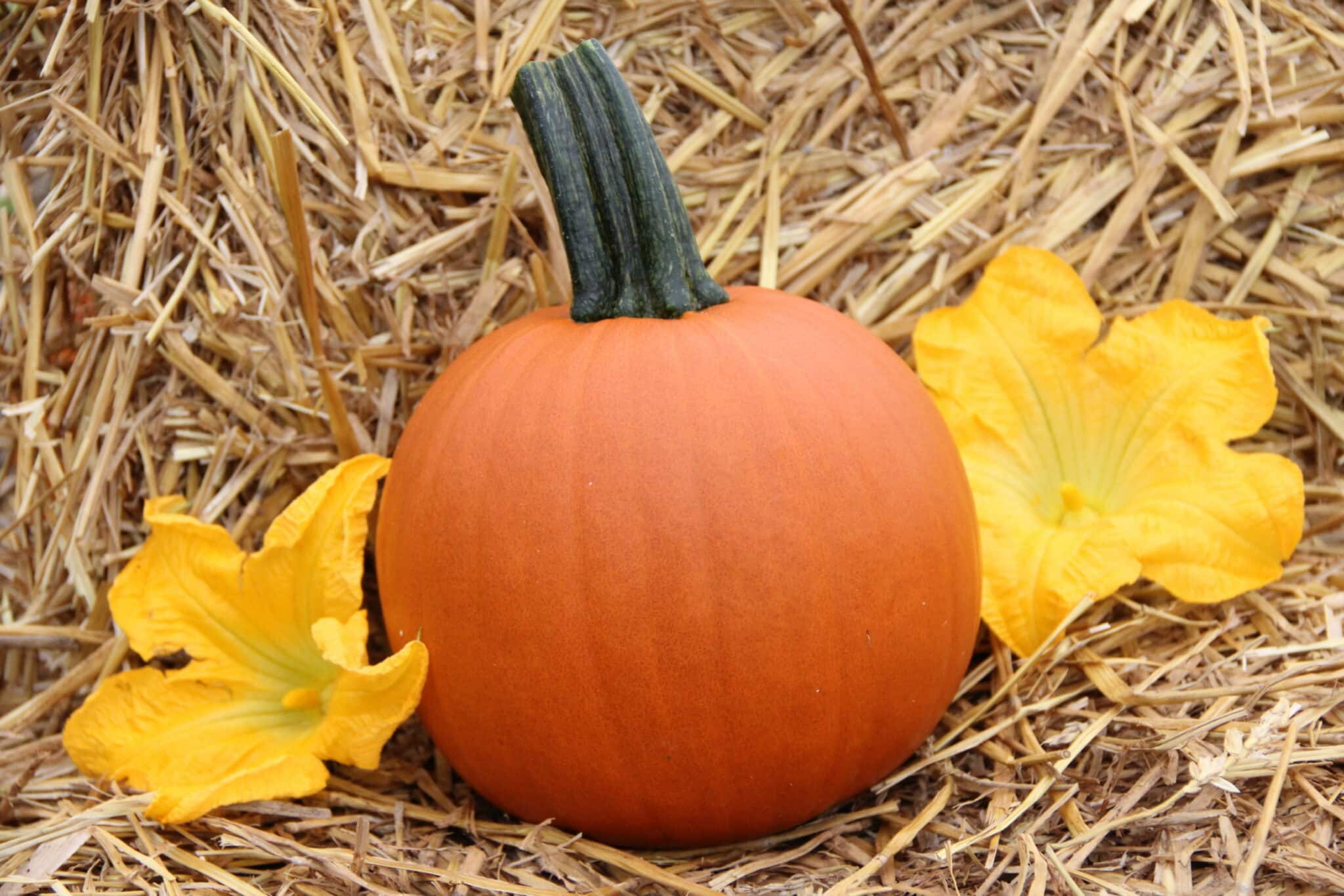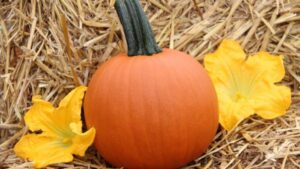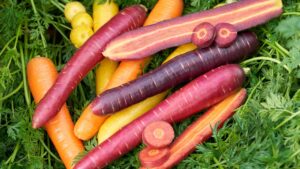Breeding a Halloween mainstay and its food industry cousin takes a lot more than just buying it from the pumpkin patch.
For most of us, even if we’re only young at heart, Halloween just isn’t Halloween without a carved pumpkin. They’re fun to make and set that spooky vibe we crave as All Hallow’s Eve draws close.
But for those who lived two centuries ago, jack-o’-lanterns were a far more serious concept. While the carving of vegetables for various reasons has a long history in many parts of the world, it’s believed that carving faces in veggies goes back thousands of years in some European Celtic cultures. These ghoulish creations may have symbolized ancestors, gods, the severed heads of enemies — no one can be sure.
It is well established that in Ireland and Scotland in the 1800s, turnips were carved with scary faces and a candle was placed inside. Recall that Halloween night is, of course, the eve of All Saints’ Day and the European Celtic festival of Samhain on Nov. 1. That night was — and is still believed to be by some — a night when supernatural creatures and the souls of the dead freely wandered, unincumbered by strict boundaries that applied the rest of the year. It was a different time and superstitious thinking was the norm. Placed in windowsills or outside doorways, jack-o’-lanterns were used to ward off any evil spirits that may happen by. With their glowing light and menacing expressions, these creations protected people but also their livestock and their hard-won harvest. .
According to HM.CLAUSE Breeder James Daley, luckily we are living through an ongoing golden age in pumpkin breeding.
What’s in a name?
It’s generally accepted that the term ‘jack-o’-lantern’ originated in an Irish folktale about a man named Stingy Jack. His disreputable deeds meant that on his death, he was not welcome in heaven, but because Jack had tricked the Devil and prevented the Devil from taking his soul, Jack was also denied entry into hell.
Jack is thus doomed to wander the night as a ghost with only a burning coal to light his way. In the story, he places his coal into a carved-out turnip and becomes “Jack of the Lantern,” shortened later to “Jack O’Lantern.” The rest is history.
Immigrants from Ireland, Scotland and England brought the jack-o’-lantern tradition with them as they arrived in the New World. Pumpkins, a large and colourful native fruit, took the concept to a new level, providing a much larger canvas for creativity.
Varieties Abound
While the old-school ‘orange carver’ pumpkins will never go out of style, Daley explains the increasing demand for something different led to the marketing of more sizes as well as pumpkins imbued with a wide range of striking looks. At HM.CLAUSE, there are striped varieties (e.g. ‘Fireball’), ones with ‘warts’ (e.g. ‘Warty Goblin’), pale specimens (e.g. ‘Spectre’) and much more.
The most recent release from Johnny’s Seeds is ‘Igor’ (pronounced Eye-gore), a tall pumpkin with dark orange skin, deep ribs and a pronounced shoulder that creates a truly foreboding look.
“We’ve gotten some great new colored jack-o-lanterns from our partners,” adds Johnny’s Pumpkin Breeder Lindsay Wyatt, “including our new release ‘Shiver,’ a small white pumpkin bred by the late Brent Loy at the University of New Hampshire.”

Overall Trends
When Daley reflects on the evolution of HM.CLAUSE pumpkin breeding, he lists directions to be diversification into specialty market slots, high quality, disease resistance — as well as globalization of seed sales, with a “slow but growing interest internationally” for Halloween pumpkins.
“For ornamental pumpkins, aesthetic qualities are hugely important (size, shape, color, peduncle characteristics, ribbing, etc.), but yield, earliness, disease resistance and growth habit are also extremely important,” says Daley. “Decorative types are less bound by size and shape constraints.”
Johnny’s pumpkin breeding programs involve long-term relationships with universities (New Hampshire and Cornell) for sourcing new genetics.
“We have had a consistent focus on breeding jack-o-lanterns, with a smaller focus on pie pumpkins,” says Wyatt. “The focus has not changed much over time — just working on continual improvement. The most important characteristics haven’t changed much either — then and now, we’ve targeted great color, strong, green handles, attractive appearance, good yield, and disease resistance. Although these targets haven’t changed, we’ve seen a great improvement in all these qualities over the years and are continuing to see improvements in our upcoming varieties, which is exciting.”
The most challenging thing in breeding pumpkins, says Wyatt, is how much influence the growing environment has on pumpkins.
“One notable feature is how much the size of the pumpkin can change year to year and based on climate and latitude,” she explains. “We address this challenge by trialing our new varieties for several years in as many environments as we can before we release them.”
HM.CLAUSE’s breeding programs have had a particular focus (for both pumpkin and winter squashes) on disease resistance in collaboration with universities and the USDA-ARS, as well as a focus on genetic diversity conservation, use of new tools and boosting the speed of genetic gain. Daley notes that as with all crops, some important disease resistances (such as powdery mildew) have been difficult to breed for in pumpkins.
“Typically, we identify resistance in wild germplasm and introgress the resistance into our elite lines, but it’s not always certain that the disease resistance will be as strong in elite cultivars, and it can be difficult to isolate the resistance from other undesirable wild traits,” he explains. “One of the advantages in pumpkin is its amenability, to varying degrees, to cross with other Cucurbita species, and this has vastly expanded the genetic variation and provided opportunities for interspecific transfer of disease resistances through conventional breeding. New DNA-based methods also allow us track resistances in our germplasm, further accelerating this process.”
Another challenge — one that every pumpkin grower understands perfectly well — stems from the fact that with a large fruit such as a pumpkin comes quite a large plant.
“I was once advised by a retired plant breeder to choose a crop that was diploid and small. While pumpkin is a diploid, making the breeding more predictable and easier, it’s a very large plant,” Daley explains. “In breeding, we do all that we can to understand the genetics and traits and apply the best field designs and predictive tools, but it’s a numbers game — the more plants we can fit in the field, the better chance that we’ll find superior combinations — lucky breaks. The size of the pumpkin plants makes the numbers challenging. I laugh when I see the density of the pepper fields next to the pumpkins.”
No matter the challenges, breeders will continue their work, and it’s truly a treat for home gardeners and commercial growers worldwide to be able to enjoy this ‘golden age’ of pumpkin breeding. It’s all due, says Daley, to “the confluence of genomics, trait information, availability of genetic diversity, the desire for companies to invest resources in pumpkin breeding and growing public interest in Cucurbits.”
For future Halloweens, expect better disease resistances, says Daley, but also more diversity of colors and “wild” patterns. There’s no doubt that Stingy Jack, wherever he roams every Halloween night, cannot help but be impressed.
Breeding calabazas
Tropical pumpkin, also known as calabaza, is a specialty squash (Cucurbita moschata) that fulfills lucrative food markets in the U.S. and beyond. In addition to high yield and disease resistance, “the breeding goals for calabaza include high soluble solids for the brewing industry, deep orange and non-stringy flesh for canning and novel food ingredients, and a favorable combination of flavor, size and flesh texture/color for the fresh-cut market,” explains calabaza breeder Dr. Geoffrey Meru at the Tropical Research & Education Center at the University of Florida. “Moreover, nutritious seeds are required by the snack food industry and for pumpkin seed butter, which are non-allergenic and nutritious alternatives to nuts and nut butters.”
Meru’s breeding program leverages sequencing technology and advanced genomic tools to accelerate selection of plants with the desirable combination of traits. Meru reports that they are currently using marker-assisted selection to breed cultivars resistant to diseases such as Phytophthora crown rot and aphid-transmitted viruses.
For more, visit
Most pumpkins – Illinois is the largest producer of pumpkins in the US. Growers there harvest twice as much acreage as any other single top-producing states.
Largest – The heaviest pumpkin (the giant pumpkin, Cucurbita maxima) was grown in Belgium in 2016 and weighed over 2,600 pounds. One that was about 100 pounds lighter was grown in New Hampshire in 2018.
Pie, please – The largest pumpkin pie was enjoyed in Ohio in 2010, weighing almost 3,700 pounds and measuring over 20 feet across. How many people had a slice is unknown!
Light it up – The community of Keene, New Hampshire, long held the world record for most jack-o’-lanterns carved and lit in one place. Then, a new record was set on October 21, 2006, when 30,128 jack-o’-lanterns were simultaneously lit in Boston, Massachusetts.
The title returns¬†- In October 2013, Keene again reclaimed the world record with 30,581 jack-o’-lanterns. Keene has now broken the record eight times.
Summarized from National Geographic and History.com













